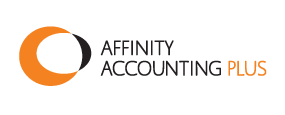With the end of financial year fast approaching, business owners should be focusing on end of financial year tax and accounting procedures which include:
- Ensure that BAS lodgements and super guarantee (SG) contributions are accurate and up-to-date. Where your business is behind on its tax and BAS payments, ensure that payment arrangements have been entered into with the ATO and are complied with.
- Updating your payroll systems and spreadsheets for changes that apply from 1 July 2015.
- Reconcile payroll and provide 2015 PAYG Payment Summaries to your employees by 14 July 2015. Also the 2015 PAYG Payment Summary Statement needs to be lodged with the ATO by 14 August 2015. Ensure that salary sacrifice superannuation contributions and certain reportable fringe benefits have been included on the PAYG Payment Summaries. Note that penalties may be imposed by the ATO where these and other documents are not lodged on time.
- Where your business operates in the building & construction industry and pays contractors for building and construction services, you need to report those payments to the ATO on the taxable payments annual report by 21 July 2015.
- Back up your data file prior to rollover and ensure compliance with record-keeping requirements. The ATO requires businesses to keep records for at least five years.
- Have your Accountant review the GST codes assigned to profit & loss and balance sheet items to ensure they are correct so that you are lodging accurate BAS’s.
- Where your business carries stock, the stocktake of inventory should have been completed by 30 June 2015. Any unders/overs of stock quantities and spoilage identified from the stocktake process should be adjusted in the stock module as at 30 June 2015 to ensure it is reflected in the 2014/15 accounts.
- Where your business has substantial plant & equipment, the stocktake of fixed assets should be completed by 30 June 2015. Any adjustments required to the assets register identified in this stocktake including description, location, quantity and damage/obsolescence needs to be recorded in the assets module as at 30 June 2015 to ensure it is reflected in the 2014/15 accounts.
- Review your Balance Sheet and Profit and Loss Statement to confirm:
- Bank accounts and loans are reconciled
- All income, including cash sales, have been recorded
- Receivables and payables subsidiary ledgers are reconciled to the General Ledger
- GST and PAYG withholding accounts are reconciled to the June BAS
- Wages in the profit & loss is reconciled to the PAYG Payment Summaries
- Capital items such as plant & equipment purchases have not been expensed as repairs
- Amounts in suspense have been allocated to the appropriate account
- Personal expenses have not been claimed as business
- Material differences to the prior year can be properly explained
- Ensure that you have been provided with the adjusting journals from your Accountant so that your general ledger agrees to the Accountant’s general ledger at 30 June.
Planning for the 2015/16 year
Some steps that you can undertake to improve on the performance of the current year include:
- Preparing/updating the business plan to provide some forward direction for the business.
- Update profit & loss and cashflow budgets for the next 12 months and compare actual to budget. Arrange credit facilities where cash shortages are forecast.
- Review financing arrangements and don’t be afraid to shop around for a better deal.
- Review insurances to ensure there is an adequate level of coverage.
- Reduce costs in areas identified as excessive in the current year.
- Implement new internal control systems to address weaknesses identified.

